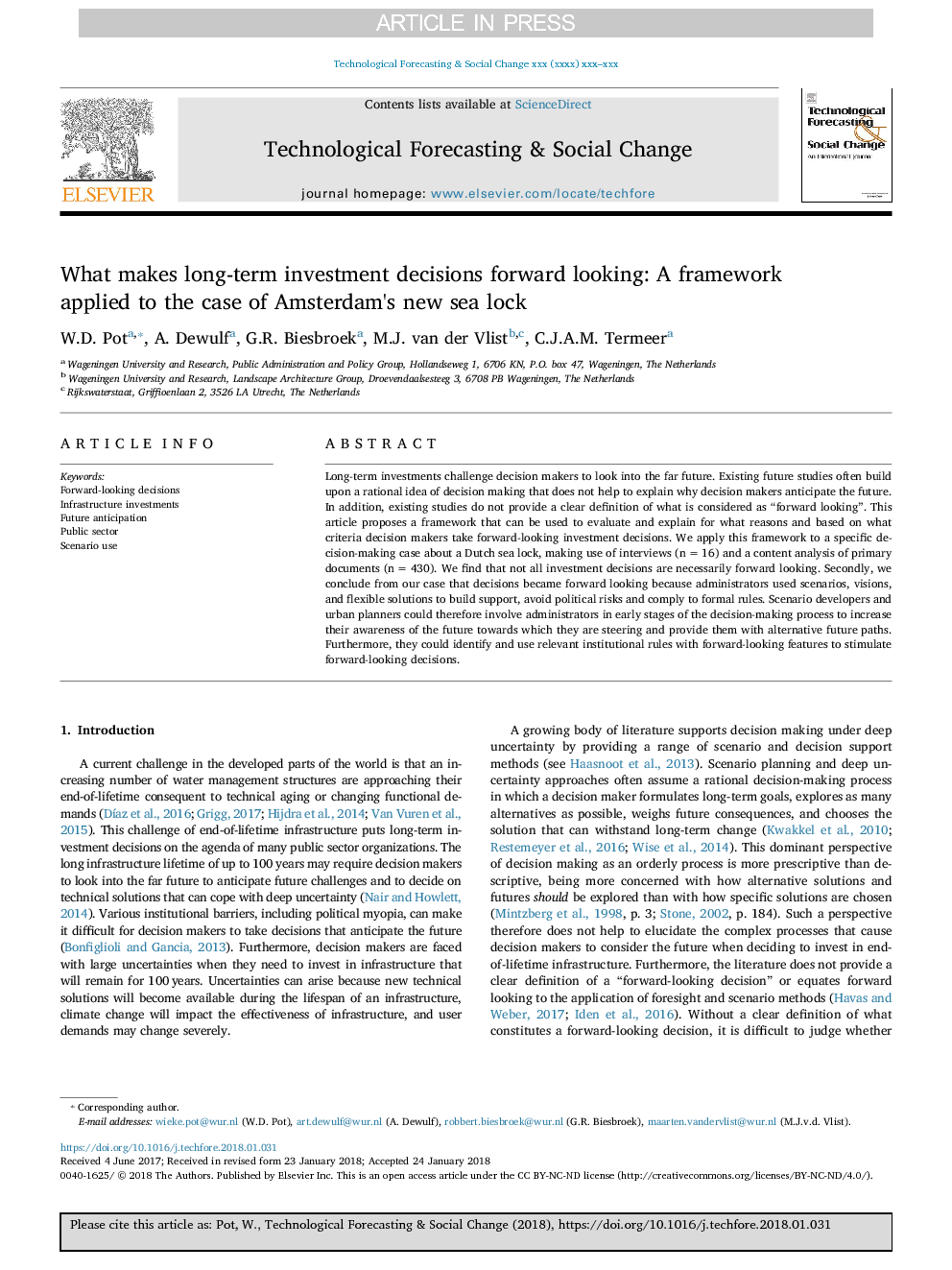ترجمه فارسی عنوان مقاله
آنچه که تصمیمات سرمایه گذاری در درازمدت را پیش می گیرد، پیش می آید: یک چارچوب مورد استفاده در مورد قفل دریایی جدید آمستردام
عنوان انگلیسی
What makes long-term investment decisions forward looking: A framework applied to the case of Amsterdam's new sea lock
| کد مقاله | سال انتشار | تعداد صفحات مقاله انگلیسی |
|---|---|---|
| 96505 | 2018 | 17 صفحه PDF |
منبع

Publisher : Elsevier - Science Direct (الزویر - ساینس دایرکت)
Journal : Technological Forecasting and Social Change, Available online 22 February 2018
ترجمه کلمات کلیدی
تصمیمات پیش رو، سرمایه گذاری های زیربنایی، پیش بینی آینده، بخش عمومی، استفاده از سناریو،
کلمات کلیدی انگلیسی
Forward-looking decisions; Infrastructure investments; Future anticipation; Public sector; Scenario use;

